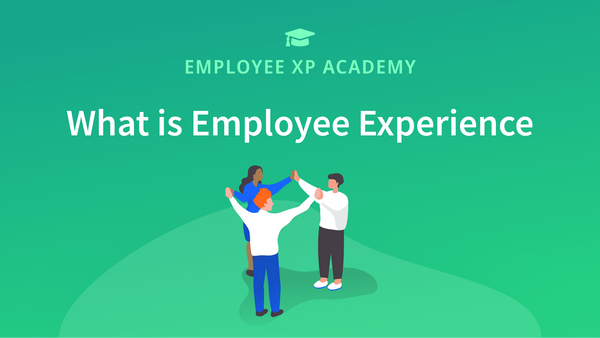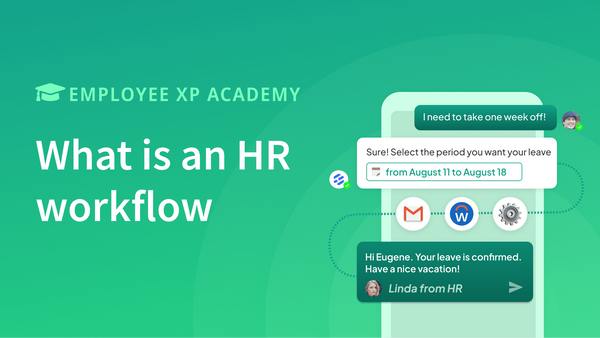9 Best Employee Experience Trends for your Company
Introduction
We all know how important it is for a company to be able to attract and retain top talent. Even though it might seem like a difficult task, there are many ways in which companies can create an appealing environment for their employees. Here are some of the most effective trends that will make your employees feel valued and happy at work.
1- Quiet Hiring
Quiet hiring is a process by which companies hire candidates without advertising the position. It's a good way to attract candidates who are not actively looking for jobs and keep their plans confidential from competitors.
By enabling companies to provide personalized attention and assess the fit between the candidate and the organization, quiet hiring can lead to a more positive and engaging recruitment experience, resulting in a more talented and motivated workforce and a better overall employee experience.
In conclusion, quiet hiring is a valuable tool for companies looking to attract and retain top talent, improve their overall employee experience, and maintain their competitive advantage.
2- Hire Candidates with an Unconventional Background
Hiring candidates with unconventional backgrounds is an employee experience trend that can bring numerous benefits to the organization. By embracing diversity and inclusiveness, organizations can create a more supportive and innovative work environment, and improve employee morale and job satisfaction.
For example, Apple is committed to diversity and values candidates who bring unique experiences and perspectives to the table, including those with unconventional educational or career backgrounds. If you are looking for a front-end developer to work in your tech startup then you might be interested in someone who has studied engineering but isn’t currently working as a software developer.
A candidate like this will bring fresh ideas and perspectives but may not have any real-world experience that can fit into the system used by your ATS so he/she might not even get through the initial screening process.
3- Onboarding Experience
The onboarding experience is one of the most crucial aspects of building an engaged workforce. It’s a time when new employees get to know their new company, bosses, and co-workers, so it’s important for them to feel welcomed into their new workplace.
A great onboarding experience helps new hires understand how they contribute to the company's mission and vision. It also helps them feel included in discussions about how the business works—and why it does what it does.
Successful HR Onboarding Processes can be as simple as a welcome email from HR or as comprehensive as a multi-day workshop series with interactive activities that help teach basic skills necessary for success in your organization.
4- Flexible Working Conditions
Flexibility is a broad term that can mean anything from having flexible working hours to remote working. A study by Gallup found that employees who work remotely are 15% more productive than those who don't, and a report by the Harvard Business Review suggested that flexible working schedules are better for employee well-being and productivity.
However, making your company's culture more flexible isn't just about allowing employees to work from home or set their own schedules; it's also about giving them control over how they use their time at the office.
5- Well-being at the Workplace
Well-being is not a new concept. It has been around for decades, but only recently have companies started to take a keen interest in the topic. And it's no surprise why. A well-being program can improve employee engagement and reduce the costs associated with stress-related health conditions.
It's also about the time that companies invest in well-being because millennials are demanding more from them than just their jobs. Young employees want to know how they can develop themselves professionally, and what kind of opportunities they'll get after working there for a year or two.
In order to attract this generation of talent, you need to offer something that adds value to their lives outside work as well—and one way of doing that is by demonstrating an interest in their well-being at work through flexible hours or job-sharing options (for example).
6- Technologies at the Workplace to Improve Productivity
The next trend is about technologies that can help employees work smarter and better. It’s no secret that technology has revolutionized the workplace, and with new technologies on the rise, it’s more important than ever to incorporate them into your business.
One of the best ways to improve productivity and employee experience is by using a pair of smart glasses or another wearable tech to allow your employees to access information quicker and easier than before. The ability for workers to access data from their wearable devices allows them to complete tasks faster without having to leave their desks or get up from their seats – which means more time spent working!
Increase Productivity with Remote Working Tools
Another way technology can help increase productivity is through remote working tools such as video conferencing software or apps like Slack. Allowing employees flexibility in where they work from day-to-day increases productivity because they don’t have travel time between meetings throughout the day - meaning less wasted time being stuck in traffic!
7- Secure Employee Data Privacy
Data privacy is another big concern for companies, but it can also be one of the most important aspects of an employee experience strategy. The growing number of data breaches makes it clear that businesses need to adopt a proactive approach to data security and ensure they have the right tools in place.
When employees know that their personal and sensitive information is being protected, they are more likely to trust their employer. This can lead to increased engagement, productivity, and job satisfaction.
Your company should comprehensively understand the different types of IT threats (such as ransomware) and know how to detect them before they happen.
8- Employee Feedback and Improvement Opportunities
Employees want to know how they can improve. They want to feel like their voice matters and that there is an opportunity for growth and change within a company.
Companies should provide multiple avenues for employees at all levels of the organization to provide feedback on their daily tasks, projects, or overall job satisfaction. Employee surveys are a great way to collect feedback from employees in an anonymous format.
Providing actionable feedback is even more important than gathering it; however, many organizations fail at this step because they don't have a defined process for identifying issues with processes or systems before they're implemented in full swing with real users.

9- Career Development in the Company
Career development should be a priority for HR, and it's no secret that employees want to be challenged and grow. Whether you're in the tech industry or a small business, there are plenty of ways to encourage career development in the workplace.
- Host workshops on new technologies or software
- Create training opportunities for employees interested in learning a new skillset
- Offer paid internships to college students who will gain experience while they're still in school
Conclusion
No matter what industry you’re in, it’s important to make sure that your employees are happy with their work. These trends are shaping the future of work and are essential for creating a positive, productive, and fulfilling workplace culture. Companies that embrace these employee experience good practices will be well-positioned to attract and retain the best talent, improve employee engagement, and ultimately drive business success.




